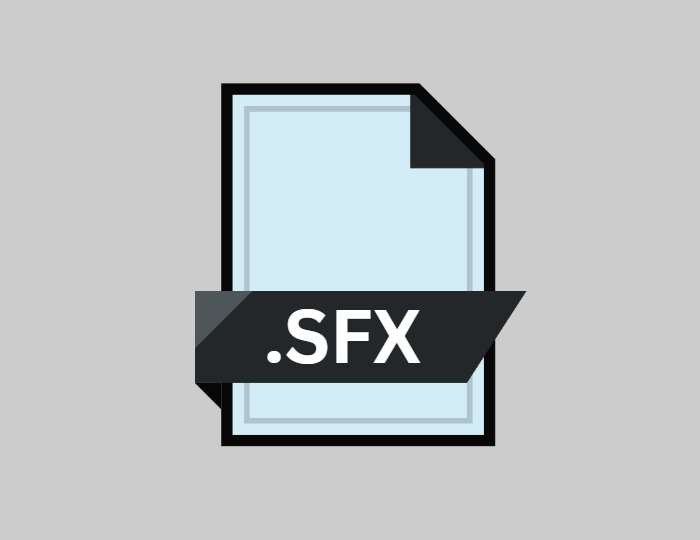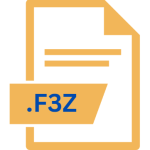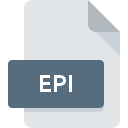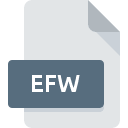.SFX File Extension

Windows Self-extracting Archive
| Developer | N/A |
| Popularity | |
| Category | Compressed Files |
| Format | .SFX |
| Cross Platform | Update Soon |
What is an SFX file?
Files come in various formats, each designed to serve a specific purpose. One such format is the .SFX file extension, which stands for Windows Self-extracting Archive.
These files play a crucial role in simplifying the process of extracting compressed files on a Windows system.
In this article, we will delve into the origin, history, technical specifications, advantages, disadvantages, and how to open or convert .SFX files across different platforms.
More Information.
The history of self-extracting archives can be traced to the need for simpler file distribution methods. Initially, users relied on third-party compression tools like WinZip or WinRAR to extract files from compressed archives.
While these tools were effective, they required users to install them separately, which could be cumbersome.
The .SFX file extension was introduced to address this issue. It allowed developers to create standalone executable files that could be distributed alongside compressed archives.
When a user double-clicked on the .SFX file, it would automatically extract the contents of the archive without the need for any additional software. This streamlined the distribution process, making it more user-friendly.
Origin Of This File.
The concept of self-extracting archives dates back to the early days of personal computing. These archives were introduced to streamline the distribution of compressed files, making it easier for users to extract content without the need for dedicated extraction software.
The .SFX file extension emerged as a solution for Windows users, providing a convenient way to package and distribute files.
File Structure Technical Specification.
.SFX files have a distinct structure and technical specification that allows them to function as self-extracting archives. These files typically consist of the following components:
- Executable Code: .SFX files contain executable code that is responsible for performing the extraction process. This code is written to run on Windows systems and is responsible for creating folders, extracting files, and handling any user prompts.
- Compressed Archive: Embedded within the .SFX file is the compressed archive itself. This archive contains the files and folders that need to be extracted. It can be compressed using various compression algorithms like ZIP, RAR, or 7-Zip.
- User Interface: Some .SFX files include a graphical user interface (GUI) to provide users with options and settings during the extraction process. This GUI can allow users to choose the destination folder, select specific files to extract, or set extraction preferences.
- Metadata: .SFX files may also contain metadata such as the original file names, file sizes, and timestamps. This information is used to recreate the files and folders accurately during extraction.
- Self-Extraction Logic: The core functionality of .SFX files lies in their ability to self-extract. They include logic that determines how the extraction process should proceed, including error handling and progress tracking.
How to Convert the File?
Converting a .SFX file to another format is not a typical operation because .SFX files are designed as self-extracting archives specifically for Windows.
If you need to access the files contained within a .SFX file or convert them into a different format, you can follow these steps:
1. Extract the Contents: To access the files within a .SFX file, you need to extract them.
On Windows:
- Simply double-click on the .SFX file. This will initiate the self-extraction process, and the contents will be extracted to a default location, usually in the same folder as the .SFX file.
- You can also open a Command Prompt or PowerShell window, navigate to the directory containing the .SFX file, and run the .SFX file with the /extract command. For example: example.sfx /extract. This allows you to specify the extraction location.
On Linux or macOS:
- You can try using Wine, a compatibility layer that allows running some Windows applications on non-Windows systems. Install Wine, right-click on the .SFX file, and choose to open it with Wine. The self-extraction process should start, and you can specify the extraction location.
- Alternatively, transfer the .SFX file to a Windows machine, extract the files there, and then transfer the extracted files back to your Linux or macOS system.
On Android or iOS:
- You can use third-party file manager apps or archive extraction apps available on the respective app stores to open and extract .SFX files. These apps often support various archive formats, including .SFX.
2. Convert the Extracted Files (If Needed): Once you have extracted the files from the .SFX archive, you can convert them to different formats as required. The conversion process will depend on the specific file types you’re dealing with.
Here are some common scenarios:
- Document Conversion: If the extracted files are documents (e.g., Word documents, PDFs), you can use software like Microsoft Word, Adobe Acrobat, or online document converters to convert them to other formats.
- Media Conversion: For multimedia files (e.g., audio or video), you can use media converters like HandBrake (for video) or Audacity (for audio) to convert them to different formats.
- Image Conversion: If you have image files, image editing software such as Adobe Photoshop or online image converters can help you convert them to various formats.
- Data Conversion: If the files contain structured data, you may need to use specialized software to convert them into a different format. For example, you can use spreadsheet software like Microsoft Excel for converting CSV files or database management tools for database files.
Advantages And Disadvantages.
Advantage:
- No External Software Required: One of the primary advantages of .SFX files is that they do not require users to have any external compression or extraction software installed. This makes them highly accessible to users who may not be familiar with such software.
- Simplified Distribution: .SFX files simplify the distribution of compressed content. Users can simply run the .SFX file, and the extraction process is automated, reducing the likelihood of errors or confusion.
- Customizable User Interface: Some .SFX files allow developers to create custom user interfaces, providing users with options and a smoother extraction experience.
- Protection: .SFX files can be password-protected or encrypted to secure the contents from unauthorized access.
Disadvantage:
- Platform Dependency: .SFX files are primarily designed for Windows systems, which means they may not work on other operating systems like Linux or macOS without additional tools or emulation.
- Limited Compatibility: While .SFX files are widely supported on Windows, they may not be as compatible with older or less common Windows versions.
- File Size: .SFX files tend to be larger in size compared to standard compressed archives because they include both the compressed data and the extraction logic.
- Complexity: Creating .SFX files with custom interfaces or complex extraction logic can be more challenging and time-consuming for developers.
How to Open SFX?
Open In Windows
- Run the .SFX File: To open a .SFX file in Windows, simply double-click on it. The self-extracting archive will run, and the contents will be extracted to a default location.
- Command Line: You can also open .SFX files from the command line by navigating to the directory containing the file and running it with the appropriate command. For example, if the .SFX file is named “example.sfx,” you can use the command
example.sfx /extractto initiate extraction.
Open In Linux
- Wine: To open .SFX files on Linux, you can use Wine, a compatibility layer that allows you to run Windows applications on Linux. Install Wine, and then use it to run the .SFX file as you would on a Windows system.
- Unpacking on Windows and Transferring: Another approach is to transfer the .SFX file to a Windows machine, run it there to extract the contents, and then transfer the extracted files back to your Linux system.
Open In MAC
- Wine: Similar to Linux, you can use Wine on macOS to run .SFX files designed for Windows. Install Wine on your macOS system, and then use it to open and extract the contents of the .SFX file.
- Unpacking on Windows and Transferring: Alternatively, transfer the .SFX file to a Windows machine, extract the files, and then move them back to your macOS device.
Open In Android
Third-Party Apps: Some Android apps, like WinZip or RAR, are capable of extracting .SFX files. Download and install a compatible app from the Google Play Store, then use it to open and extract the contents of the .SFX file.
Open In IOS
Third-Party Apps: Similarly, you can use third-party apps available on the App Store, such as iZip or WinZip, to open and extract .SFX files on your iOS device. Download and install the app, then use it to extract the contents.
Open in Others
Opening .SFX files in other operating systems may require similar approaches. Look for third-party software or emulation options that allow you to run Windows applications if the platform is not natively supported.













